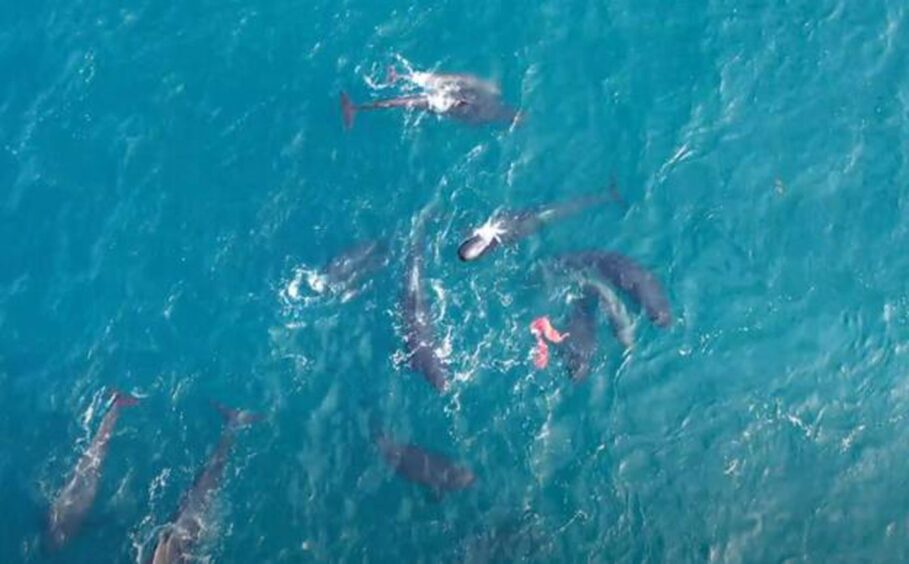Rediscovered footage from Shetland has revealed “significant” insight into pilot whale birthing habits.
In 2019, drone pilot and wildlife cameraman Nick McCaffery captured a pilot whale expelling its placenta in Yell Sound.
It was not until he shared the footage recently with marine mammal researcher, Emily Hague, that he realised how significant the footage was.
Knowledge on where pilot whales have their calves is “extremely limited” and the drone video is helping give new insight into the mammal’s behaviour.
Drone footage captures moments ‘impossible’ from boats
Ms Hague, who is a researcher at Heriot-Watt University, and Mr McCaffery have since published the footage in the academic journal, Aquatic Mammals.
Mr McCaffrey, who is part of the wildlife camera crew for BBC’s Wild Isles, has captured a lot of wildlife over the years.
However, he said it took him a while to understand how important the drone footage was.
He added: “I knew at the time I had witnessed something significant, but it took a moment to realise that I was looking at a pilot whale placenta.
“After that, the behaviours I was observing became a whole lot more intriguing.”
Ms Hague said these unique captured moments help researchers better understand the marine mammals and also better protect them.
She said: “Drone footage is helping us capture moments that would be impossible to see from land or boat, giving us a new insight into the underwater world.
“Until now, knowledge of where pilot whales have their calves was extremely limited. In fact, we don’t have much understanding of where many marine mammals give birth.
“We do know that whales and dolphins tend to expel the placenta within 12 hours of giving birth, so we can be pretty sure that this pilot whale had its calf in UK waters.
“Understanding marine mammals’ behaviour, knowing where they mate and reproduce, can help us know where to target protection of the marine environment so that they can thrive.”

Conversation